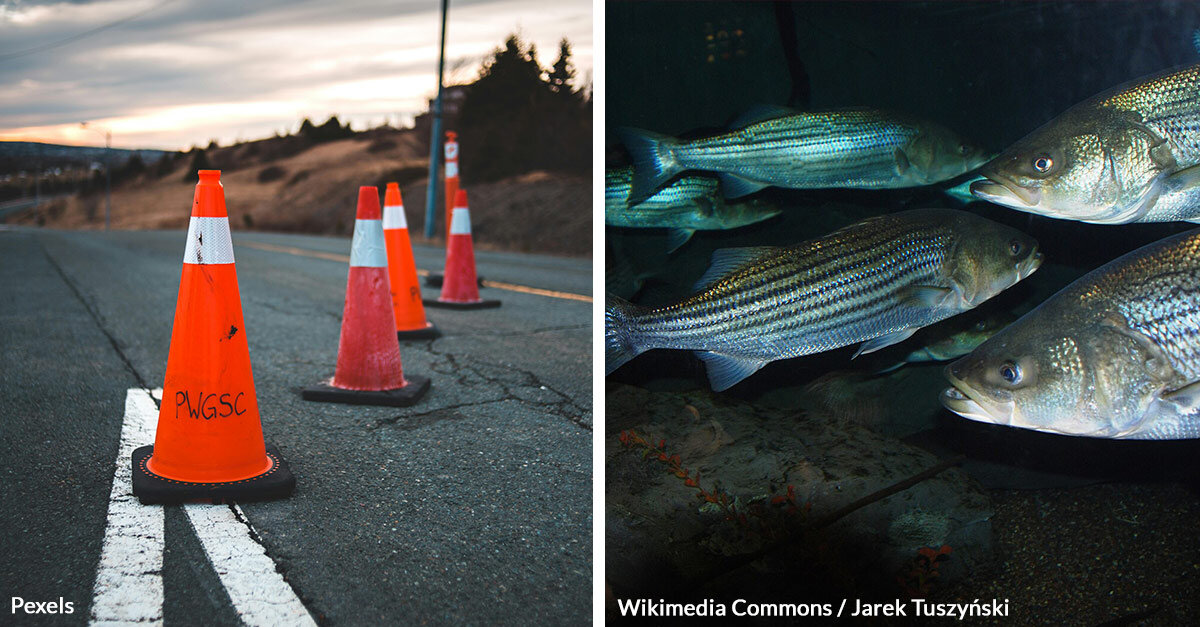In the fight against wildlife crime, authorities on Long Island, New York, encountered a bizarre method of poaching striped bass.
Recent incidents have highlighted the lengths to which poachers will go to evade law enforcement, including the use of traffic cones as makeshift storage for illegally caught fish.

Poachers in New York used traffic cones to hide illegally caught striped bass.
The Ingenious Method of Concealment
On April 7, Environmental Conservation Officers (ECOs) stumbled upon seven striped bass surreptitiously hidden within traffic cones on the Bayville Bridge.
As WRRV reports, this discovery was not isolated. Throughout the early spring, multiple instances of striped bass being concealed in unusual hideouts like sandy holes, behind logs, or within brush piles were reported. This method highlights a growing trend of innovative evasion tactics by those violating fishing regulations.

Environmental Conservation Officers discovered seven striped bass inside traffic cones on Bayville Bridge.
Law Enforcement’s Response
The response from New York’s Department of Environmental Conservation (DEC) was swift and effective. Utilizing both uniformed and undercover officers, the DEC has been active at known fishing hotspots, resulting in significant seizures and fines. Over a two-month period, officers confiscated over 90 illegally-possessed striped bass, The Meateater reports. These efforts are part of a broader initiative to uphold environmental laws and protect local wildlife.
Impact on Local Ecosystems
The poaching of striped bass, particularly during the closed season, poses a severe threat to the ecological balance and the fish population’s sustainability. Striped bass are ecologically important, influencing both the environment and local economies, reports CBS News.
By targeting these fish illegally, poachers undermine conservation efforts designed to ensure future population health.

Officers used both undercover and uniformed patrols to catch the poachers.
Community and Legal Repercussions
The legal consequences for those caught poaching are substantial, involving hefty fines and potential long-term restrictions on fishing rights. For instance, individuals caught in these acts faced over $2,500 in fines, The Meateater reports. These penalties reflect the seriousness with which the state of New York treats wildlife violations.

The illegal fishing activities were concentrated on Long Island, New York.
Public Awareness and Educational Efforts
Public awareness campaigns and educational programs are crucial in combating poaching. Informing anglers about the rules and the reasons behind seasonal and size restrictions can help reduce instances of illegal fishing.
Additionally, the DEC employs outreach programs to engage the community and foster a collaborative approach to conservation, according to CBS.
Through vigilant enforcement and community cooperation, New York continues to combat such innovative poaching tactics. The ongoing efforts by the DEC not only enforce the law but also educate and involve the public in protecting these vital resources for future generations.






